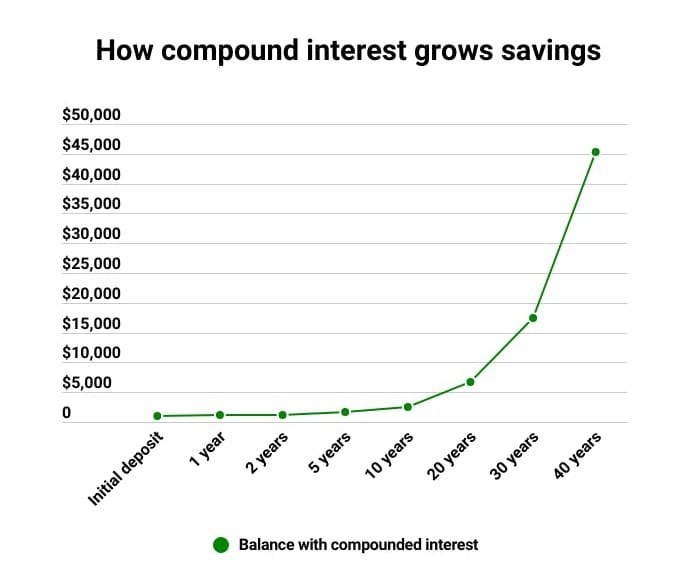Calculus 101: Part 1 | Proofs
Enhance your understanding of calculus proofs with this guide.

Introduction
Despite there being many branches of mathematics, calculus is still one of the fundamental tools that allow us to analyze any function and to understand and predict what goes on in the world around us. Above all these formulas, there is one thing that we must never forget, and that is the proofs. Proofs give us a way to comprehend mathematics while also serving as a reminder of the validity of these mathematical rules. This article aims to provide a method for us to do exactly that.
1. First Principle of Differentiation
To put it in the simplest way I can think of, differentiation is the calculation of the gradient of any point on a function. The first principle of differentiation is established on this definition. The proof of this is quite conspicuous, but since almost every formula after this relies on it, I will go through the proof nonetheless.
Let $f(x)$ be a function of $x$. The graph below shows the curve of $y=f(x)$
As you can see in the graph above, the gradient of the curve is always changing. So how do we find the gradient at one specific point? The answer is limits.
Let $A$ and $K$ be 2 points on the curve of $f(x)$ with coordinates $(xₐ , yₐ)$ and $(xₖ , yₖ)$ respectively.
Notice that as $xₖ$ approaches $xₐ$ (and hence $yₖ$ approaches $yₐ$), the gradient of the line $AK$ approaches the gradient at point $A$. Hence, we can express the gradient at point $A$ as the following limit.

To get rid of $xₖ$, we can substitute $xₖ-xₐ = h$. This gives us

Hence, we have proven that for any point on a curve $y=f(x)$, the gradient at that point is

This may seem a bit daunting at first, but as we meddle around with calculus more and more, this equation becomes second nature to us.
2. The Power Rule
The power rule is one of the most basic differentiation rules we learn at first, sometimes even before knowing the first principle, simply because of how simple it is.

We can prove this rule by going back to the first principle.

The reason I have excluded every term after $nhx$$(n-1)$ is that all of these will still have a coefficient h after being divided by the denominator $h$. Since this is a limit where $h$ approaches $0$, all of those terms will be equivalent to zero. This concludes the proof of the power rule
3. The Chain Rule
The chain rule is also one of the most commonly used calculus rules. The easiest way to express it would be

There are many situations where the chain rule would be useful. For example, let's take the derivative of $y$ with respect to $x$ in the following equation

One way to solve this is to expand and simplify it, but that can get very tedious on a larger scale. This is where the chain rule comes in. Using substitution, we can rewrite our original equation into two equations.

Now, we can finally use the chain rule to solve this.

If you think this seems very convenient to prove since the derivatives cancel out like fractions, you're right. This is because each derivative originates from the first principle, which is based on the gradient formula for a straight line. You could probably do this proof yourself, but let's do it anyway for the sake of it. Suppose we take the derivative of the composite function below with respect to $x$

We can start by putting this in terms of the first principle.

Note that $f '(x)$ can be written as shown

In order to incorporate this new limit into our main derivative, we can do the following

It is worth noting that

With this, we can rewrite the equation as

Using the first principle again, we can form this equation into the proper chain rule

4. The Product Rule
Go ahead and give the following problem a try

One way you could have solved it would be by expanding the equation to form individual terms which are easy to differentiate. However, like the example with the chain rule, that can get very tedious (or even impossible) on other problems. This is where the product rule comes in.

Like all the other proofs, we can start by writing this as a limit.

Again, we want to rearrange this to form something that we have already defined. This can be the limit form of $f '(x)$ or $g'(x)$.

This limit can then be grouped into something that might seem familiar to you.

You may have heard of another rule, which is the quotient rule. This rule can be quite easily derived from the product rule. I will just quickly go through this derivation.

From here, we can use the product rule and the chain rule.

5. Differentiation of Trigonometric Identities
Even with the rules above, there are some functions that we still cannot differentiate, such as the six trigonometric identities. These functions require something else known as the Maclaurin Series. Before I begin any of the proofs, take a look at the two Maclaurin expansions below.

Now let's begin with the proving. Take the problem below.

We'll start by rewriting this equation with the Maclaurin expansion

Now, we can differentiate each individual term

Does this look familiar? Notice that the result of this differentiation is exactly the same as the Maclaurin expansion for $cos (x)$. Thus,

We can also use the exact same method to find the derivative of $cos (x)$, so I will move on to $tan (x)$

We can now use the quotient rule

A similar thing can be done for the derivatives of $csc (x)$, $sec (x)$, and $cot (x)$



6. Inverse trigonometric identities
This might sound a bit counterintuitive, but the derivative of $arcsin (x)$ is not $arccos (x)$ we need a completely different method to solve for the derivatives of these trigonometric identities.


The other inverse trigonometric functions can also be differentiated with the same method.


7. Derivatives of exponential functions
One of the most popular derivatives is that of $\frac{d}{dx}\left(e^x\right)$ $=$ $e^x$. Every high school math student would know this, but very few of them know why. To begin with, the statement $\frac{d}{dx}\left(e^x\right)$ $=$ $e^x$ must be true, since the mathematical constant $e$ was defined as the only number to have this property. But why does $e$ do that?
Just like for the trigonometric identities, we are going to need a Maclaurin expansion for this one.

Notice that when we take the derivative of each term with respect to $x$, we get the following

This is exactly equal to $e^x$. It's that easy. If you want to find the value of $e$, all you have to do is substitute $e^x$ with $x=1$. Doing this gives us

which is approximately equal to $2.718$.
Now, with the derivative of $e^x$, we can move on to other exponential functions, the first one being $ln x$. Since $ln x$ is just the inverse function of $e^x$, this can be done in the same way as the inverse trigonometric functions.

Now that we have proved the derivatives of $e^x$ and $ln x$, we can prove any cases of $\frac{d}{dx}\left(a^x\right)$ and $\frac{d}{dx}\left(\log _a\left(x\right)\right)$.


If you utilize all the rules above, you can differentiate any exponential function. Take a look at the problem below, and feel free to give it a try before I solve it.

If your answer is $(1+ln x)x^x$, congratulations! If you got it wrong or didn't try at all, here is the solution



Conclusion
There are many more functions in mathematics that can be differentiated in unique ways, but as long as you practice the rules in this article, any function can be manipulated into something differentiable.
If there are any other STEM topics you want us to write about, or if you want a part 2 for this article, feel free to leave a comment or a message on our Instagram page.



